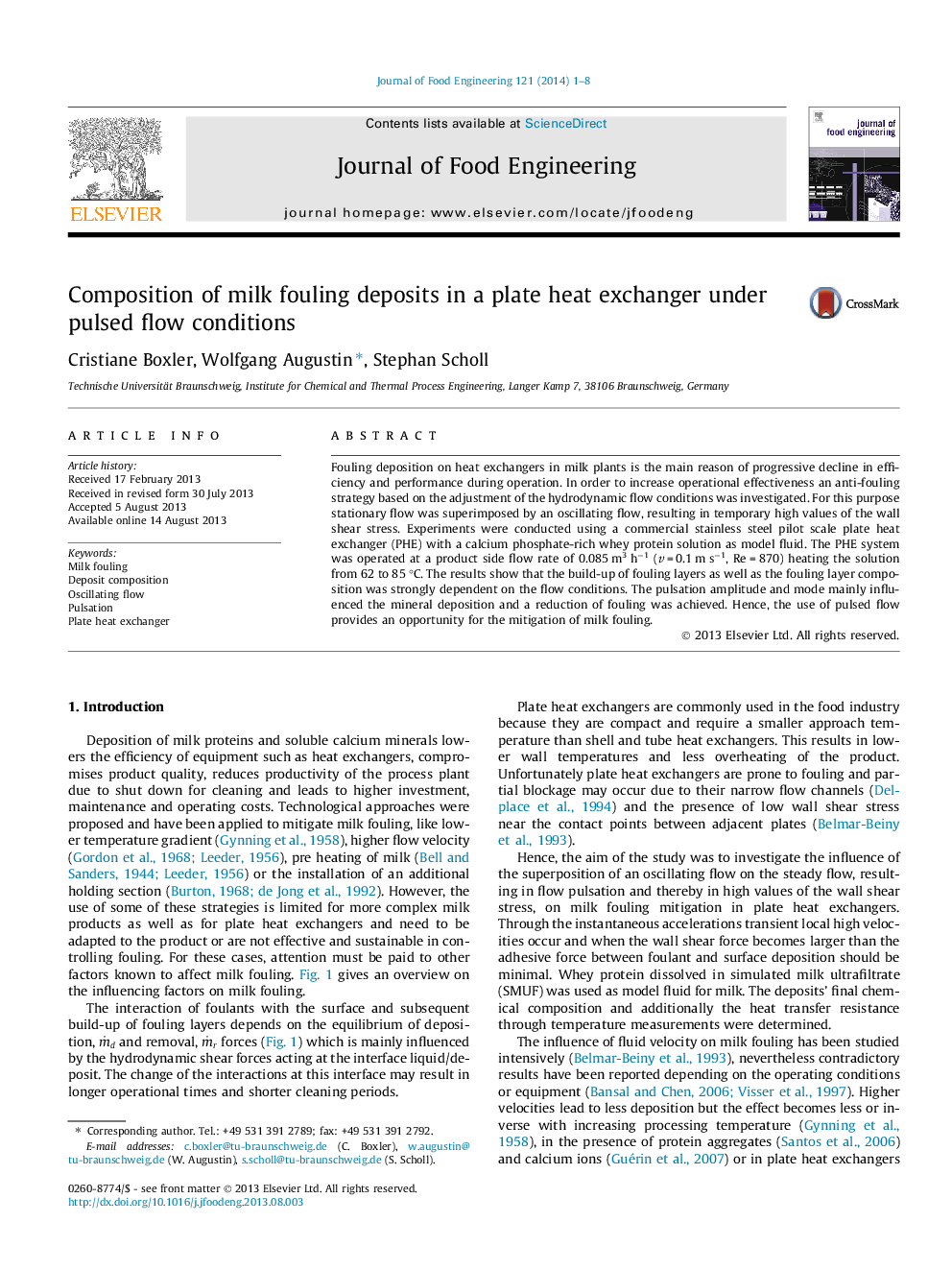| Article ID | Journal | Published Year | Pages | File Type |
|---|---|---|---|---|
| 6666029 | Journal of Food Engineering | 2014 | 8 Pages |
Abstract
Fouling deposition on heat exchangers in milk plants is the main reason of progressive decline in efficiency and performance during operation. In order to increase operational effectiveness an anti-fouling strategy based on the adjustment of the hydrodynamic flow conditions was investigated. For this purpose stationary flow was superimposed by an oscillating flow, resulting in temporary high values of the wall shear stress. Experiments were conducted using a commercial stainless steel pilot scale plate heat exchanger (PHE) with a calcium phosphate-rich whey protein solution as model fluid. The PHE system was operated at a product side flow rate of 0.085 m3 hâ1 (v = 0.1 m sâ1, Re = 870) heating the solution from 62 to 85 °C. The results show that the build-up of fouling layers as well as the fouling layer composition was strongly dependent on the flow conditions. The pulsation amplitude and mode mainly influenced the mineral deposition and a reduction of fouling was achieved. Hence, the use of pulsed flow provides an opportunity for the mitigation of milk fouling.
Related Topics
Physical Sciences and Engineering
Chemical Engineering
Chemical Engineering (General)
Authors
Cristiane Boxler, Wolfgang Augustin, Stephan Scholl,
